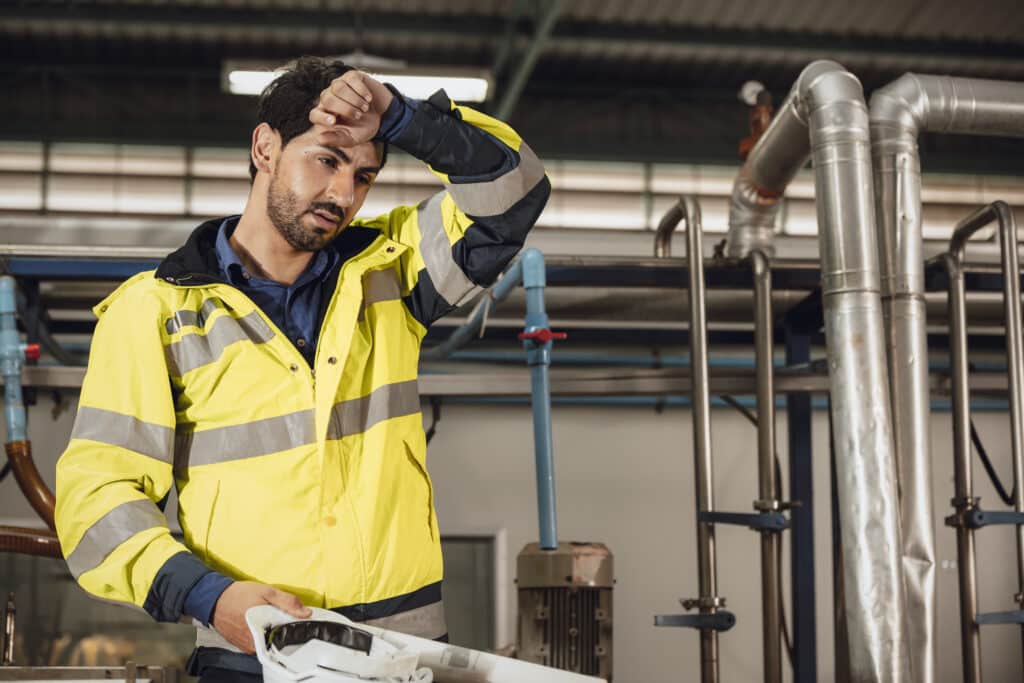By Kosta Pappas
Whether for work or family, we travel a lot here at VP, so much so we’ve created a blog series titled “Travels with VP” that reflect on our adventures — whether it’s as simple as a recommendation for a brewery with a great IPA on tap or the exploration of a MEP-related topic unique to a locale. We hope you enjoy this first installment!
In the past several weeks, travels for both work and family took me to New York, Washington, DC and Texas. While normally, these locations are vastly different, they clearly had one distinct thing in common this trip: the heat. It was stifling, and now that I’m home, it doesn’t appear as if it will relent anytime soon. Given this, we thought it would be appropriate to explore the history of the device that not only makes part of our jobs possible, but makes this intolerable heat tolerable: the air conditioner.
THE HISTORY OF AIR-CONDITIONING
As with many inventions, the air conditioner was born out of necessity. In the 1840s, Dr. John Gorrie of Apalachicola, Florida struggled to treat victims of malaria ravaged by high fevers. Theorizing that relieving patients of “the evils of high temperatures” was key to not only treating the disease, but preventing it as well, he created and later received a patent in 1851 for his refrigerating machine that made ice and cooled the air. His invention was not well-received, and sadly, following the death of his financial backer, Gorrie was unsuccessful in bringing his invention to the masses.
Decades after Gorrie first introduced the idea of artificial cooling, astronomer Simon Newcomb advanced the premise further after President James A. Garfield lay dying of multiple gunshot wounds in a stifling hot sickroom. To cool the president, Newcomb and a team of naval engineers assembled a machine that used six tons of ice to cool the passing air. While effective — it lowered the room’s temp from 95 to 75 degrees — it consumed ice in such quantities nearly impossible to maintain during that time period. Another two decades passed before the breakthrough that would form the foundation for today’s air conditioning systems would occur.
In 1902, Willis Carrier, an engineer for the Buffalo Forge Company, created his “Apparatus for Treating Air” to combat a humidity problem at the Sackett-Wilhelms Lithographing and Publishing Company. Excess moisture in the air wrinkled the publisher’s paper supply; Carrier’s invention controlled the humidity by blowing air over coils containing a coolant. He continued to refine his invention, recognizing the benefits his apparatus could bring to industries and homes alike. He eventually left Buffalo Forge and formed Carrier Engineering Corporation with six fellow engineers.
Just two short years later, the American public was introduced to the concept of comfort cooling at the 1904 St. Louis World Fair where organizers used 35,000 cubic feet of air per minute to cool the 1,000-seat auditorium and rotunda within the Missouri State Building. The public didn’t experience its full capabilities until another World’s Fair, decades later in 1939. There, Carrier hosted its “Igloo of Tomorrow” expo where 65,000 visitors experienced air-conditioning for the first time, sky rocking the demand for conditioned air.
Businesses — movie theaters and department stores especially — rushed to install what the British scholar S.F. Markham dubbed “the greatest contribution to civilization in this century.” American homes, however, wouldn’t enjoy the comforts of the air-conditioner until years later, due in part to the machine’s large size and equally large price tag. (A window unit alone could cost between $10K-$50K or $120K-$600K in today’s market.) This changed dramatically not long after World War II ended, with more than one million A/C units sold in 1953 alone.
HOW AIR-CONDITIONERS FACILITATED THE TECHNOLOGY BOOM
The early inventors could not have predicted all the ways air-conditioning would improve life. The invention indirectly paved the way for advancements in other industries — like information technology and the cooled environments necessary for computers to run.
We can directly attest to this. As mechanical engineers, we see firsthand every day what the right HVAC system can do for a facility. We understand a high-rise hotel may benefit from a central chiller system whereas a senior living facility may perform more efficiently with a Variable Refrigerant Flow Split System (VRF) in place. Understanding these complexities allows us to keep our cool when recommending A/C and chilling needs for our clients — both literally and figuratively!
About VP Engineering
VP Engineering is a dynamic MEP design firm in Charlotte offering engineering expertise in senior living, multi-family, hospitality, medical, industrial, retail/commercial and educational markets worldwide. With experience in a wide range of building types, our MEP engineering services help keep projects on budget and achieve your goals. Learn more at vpce.com.



